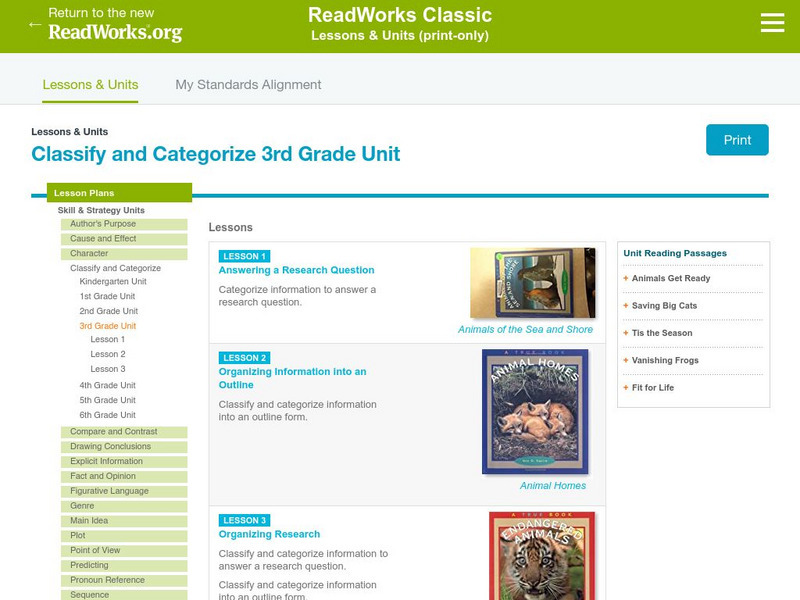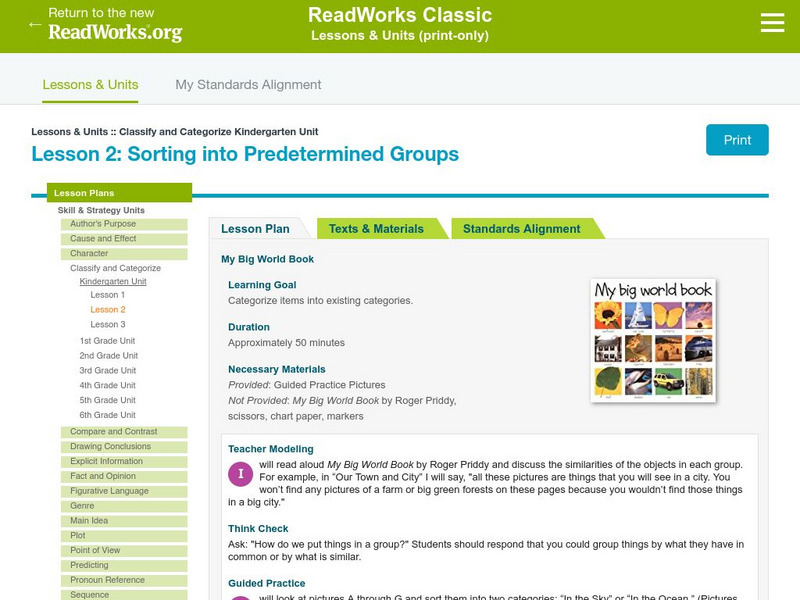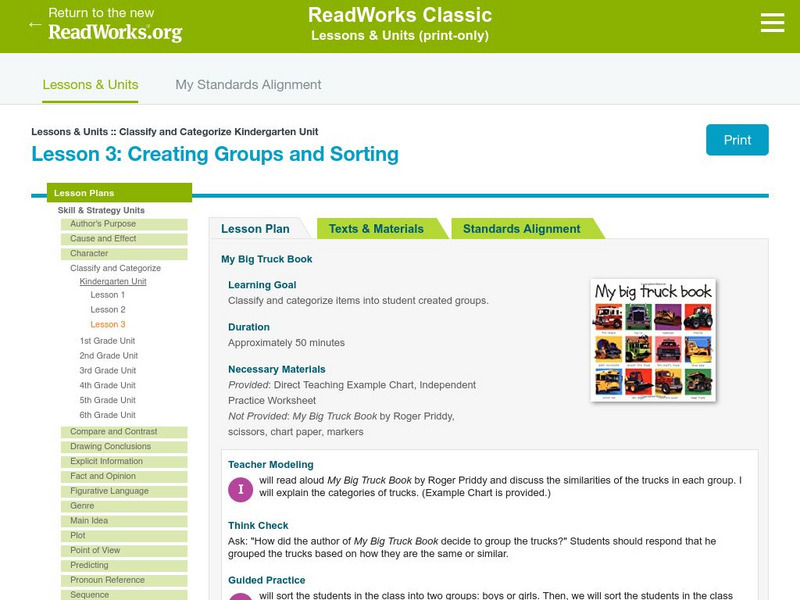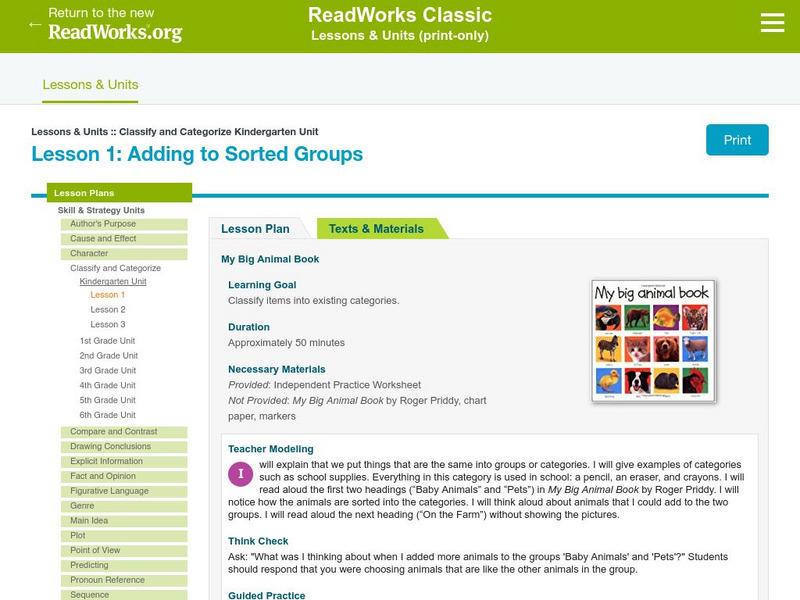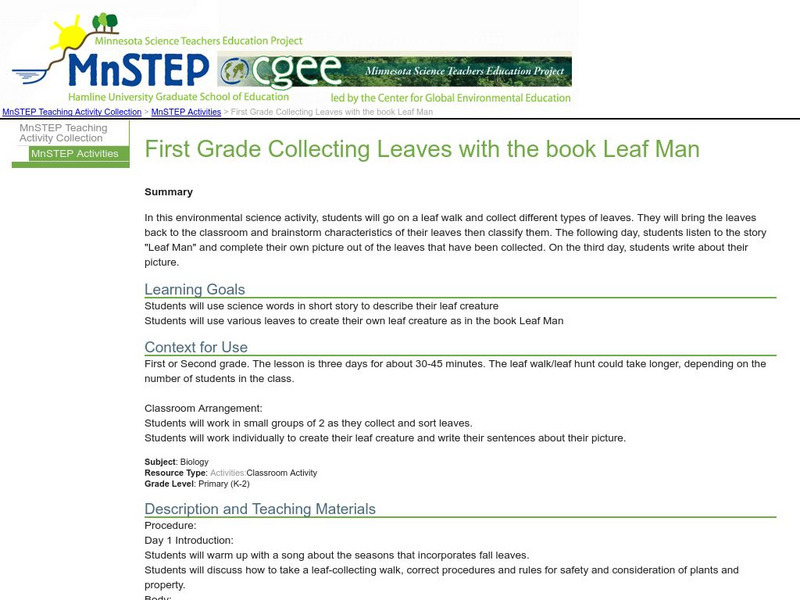Other
Introductory Anatomy: Bones
In addition to providing information on the function of bones in our body, this website includes tips for classifying and identifying specific bones of the skeletal system.
Polk Brothers Foundation Center for Urban Education at DePaul University
Depaul University: Center for Urban Education: Classify Facts and Opinions [Pdf]
Students will find three lessons about facts and opinions in this learning module. The following topics are linked in the module: contrast and evaluate fact and opinion; classify facts and opinions; and locate and classify facts.
Sophia Learning
Sophia: Classification Basics
This lesson will explain how and why scientists classify organisms.
Read Works
Read Works: Endangered Animals at a Glance
[Free Registration/Login Required] An informational text about four endangered animals that are increasing in population, the gray wolf, the bald eagle, the grizzly bear, and the Sumatran rhinoceros. A question sheet is available to help...
Read Works
Read Works: Fit for Life
[Free Registration/Login Required] This passage includes the information about how to stay healthy for life. This passage is intended as a guided passage to instruct students how to classify and categorize information.
Read Works
Read Works: Genre Kindergarten Unit: Real and Make Believe
[Free Registration/Login Required] A lesson plan where students learn the difference between real and make-believe and practice sorting details into the two categories. Ideas for direct teaching, guided practice, and independent practice...
Read Works
Read Works: Classify and Categorize 3rd Grade Unit
[Free Registration/Login Required] A three-lesson unit on classifying and categorizing through which students learn how to categorize information to answer research questions and then to organization that information into an outline....
Read Works
Read Works: Classify and Categorize 2nd Grade Unit
[Free Registration/Login Required] A series of three lesson plans designed to teach students to classify and categorize items, characters, and information. The third activity is based on the book Splish! Splash! Animal Baths by April...
Read Works
Read Works: Classify and Categorize 4th Grade Unit
[Free Registration/Login Required] A three-lesson plan unit on classifying and categorizing through which students learn how to organize research into an outline, use text features to locate information, and write a research report....
Read Works
Read Works:classify/categorize Kindergarten Unit: Sorting to Predetermined Groups
[Free Registration/Login Required] A lesson using the book My Big World Book by Roger Priddy in which students learn to sort items into predetermined categories. Ideas for teaching, guided practice, and independent practice are included....
Read Works
Read Works: Classify/categorize Kindergarten Unit: Creating Groups and Sorting
[Free Registration/Login Required] A lesson using the book My Big Truck Book by Roger Priddy in which students learn to sort items into categories they create for themselves. Ideas for teaching, guided practice, and independent practice...
Read Works
Read Works: Classify and Categorize Kindergarten Unit: Adding to Sorted Groups
[Free Registration/Login Required] A lesson using the book My Big Animal Book by Roger Priddy in which learners learn to sort items into predetermined categories. Ideas for teaching, guided practice, and independent practice are...
Education.com
Education.com: Sorting Objects by Material
[Free Registration/Login Required] This game challenges kids to sort objects by material. Taking their cues from the Three Little Pigs, preschoolers will sort items made of straw into one backpack, sticks into another, and bricks into a...
Other
Sorico: Describing and Comparing Measurable Attributes
The following unit can be used to teach measurable attributes. Students will describe and compare two objects with a measurable concept in common using direct comparison. Included are necessary vocabulary, a scavenger hunt, and links to...
Alabama Learning Exchange
Alex: Let's Identify and Classify
During this hands-on lesson, students learn about scientific classification by navigating the Internet. They will examine a variety of potato chips in order to create their own classification key.
ArtsNow
Arts Now Learning: Classification of Animals: "Connect Your Animal Show" [Pdf]
Fifth graders learn about animal classification by reviewing the taxonomy system, then looking at pictures of animals as if they were scientists, acting out an animal's characteristics, then classifying their animal.
Science Education Resource Center at Carleton College
Serc: First Grade Collecting Leaves With the Book Leaf Man
In this environmental science activity, students go on a leaf walk and collect different types of leaves, and then brainstorm characteristics of their leaves then classify them.
Polk Brothers Foundation Center for Urban Education at DePaul University
De Paul University: Center for Urban Education: I Can Classify and Summarize Information [Pdf]
A graphic organizer is provided to help students classify information in a nonfiction piece. Then students will write a summary of the information contained in the graphic organizer.
ClassFlow
Class Flow: Animals Grow and Change
[Free Registration/Login Required] This is a 2nd Grade unit on how animals grow and change. It includes information on life cycles of animals and how to classify animals into groups (i.e. mammal, reptile, amphibian, etc.) There is an...


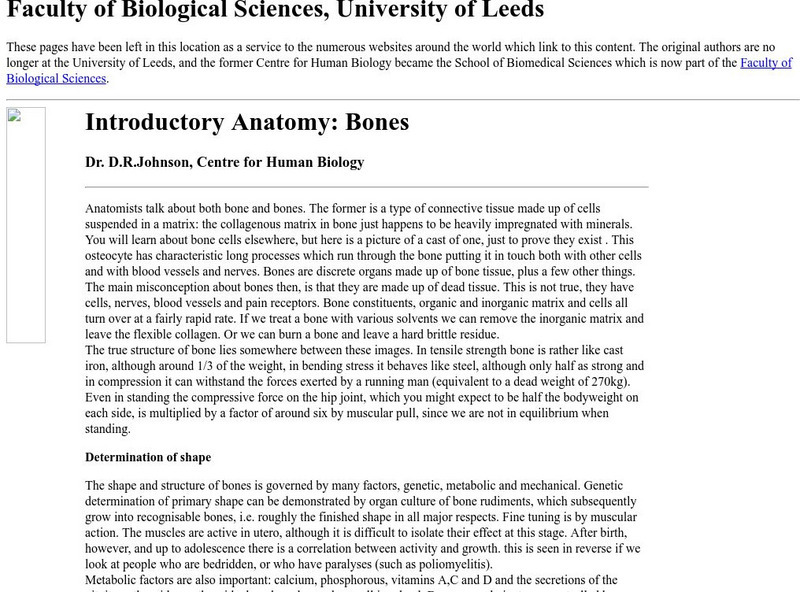
![Depaul University: Center for Urban Education: Classify Facts and Opinions [Pdf] Unit Plan Depaul University: Center for Urban Education: Classify Facts and Opinions [Pdf] Unit Plan](https://content.lessonplanet.com/knovation/original/119988-719af6c927af61affa025c27754c7fae.jpg?1661787067)




